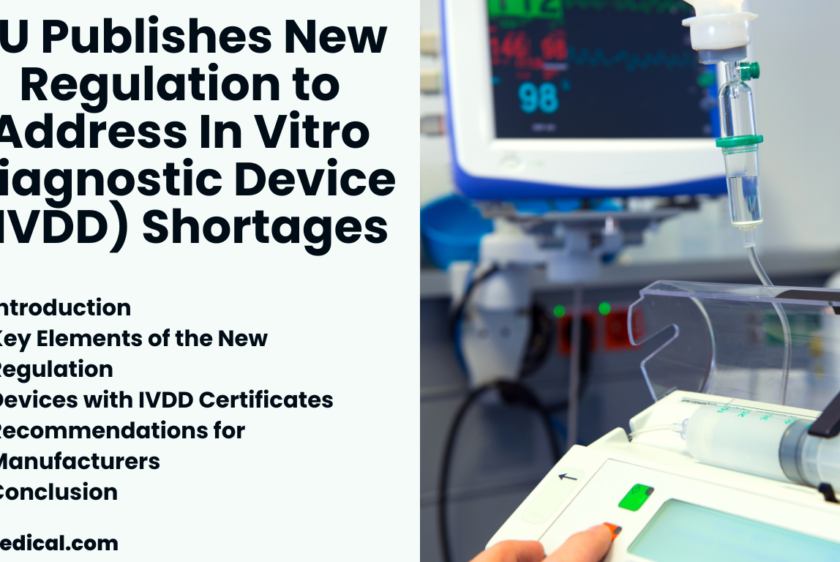On July 9, 2024, Regulation (EU) 2024/1860 was published in the Official Journal of the European Union (OJEU) and took effect immediately. This new regulation aims to address the expected shortages of in vitro diagnostic medical devices (IVDs) in the EU due to the slower-than-expected transition from the In Vitro Diagnostic Directive (IVDD) to the In Vitro Diagnostic Regulation (IVDR).
Following the removal of the sell-off provisions in Article 110.4, made official with Regulation (EU) 2023/607 on March 20, 2023, this new amendment ensures patient care by maintaining the availability of IVDs without compromising safety standards.
The new regulation extends the IVDR transition timelines and recognizes previously issued IVDD Certificates as valid for the duration of these extended timelines. This allows manufacturers to continue marketing their devices under the Directive’s compliance while transitioning to IVDR.
However, the extended timelines only apply to devices meeting specific conditions outlined in the regulation, ensuring manufacturers have taken appropriate steps towards the IVDR transition. Key points from the new regulation include:
Key Elements of the New Regulation
1.Compliance with Directive 98/79/EC and no unacceptable risk to health or safety.
2. No significant changes in the design or intended purpose of the device.
3. Implementation of an IVDR-compliant Quality Management System (QMS) by May 26, 2025.
4. Submission of an IVDR application and signing a formal agreement with a Notified Body by the applicable deadlines.
Devices with IVDD Certificates valid as of May 26, 2022, but expired before this regulation’s publication, can benefit from the longer timelines if the manufacturer applied for IVDR and signed an agreement before the Directive Certificates expired or received a derogation/exemption from a Competent Authority.
| Device Class | IVDR Compliant QMS | Officially Applied to NB | Formal written agreement signed with a NB | Transition Deadline |
| IVDD Certified Devices * | 26 May 2025 | 26 May 2025 | 26 September 2025 | 31 December 2027 |
| Class D Self-Declared | 26 May 2025 | 26 September 2025 | 31 December 2027 | |
| Class C Self- Declared | 26 May 2026 | 26 May 2026 | 31 December 2028 | |
| Class B and A-Sterile self-declared | 26 May 2027 | 26 September 2027 | 31 December 2029 | |
| *Conditional to certificates validity (Art 110(2)) | ||||
If a manufacturer has their IVDR application with a different Notified Body than the one that issued the Directive Certificate, the regulation allows the IVDR Notified Body to take over the surveillance of these devices, subject to an agreement between both Notified Bodies and the manufacturer.
However, the Notified Body under Regulation (EU) 2017/746 is not responsible for the conformity assessment and surveillance activities carried out by the original Notified Body.
Recommendations for Manufacturers
Manufacturers are advised not to delay their IVDR plans to fully utilize the available capacity for completing the IVDR transition. Those who have already planned or submitted their applications should stick to their plans.
Other manufacturers should submit their IVDR applications as soon as possible to avoid being added to the end of the review queue, which could result in delayed conformity assessments.
Only devices transitioning to the IVDR benefit from the extended timelines and validity of Directive Certificates. Manufacturers should note that they cannot make significant changes to the design or intended purpose of their devices during this period.





